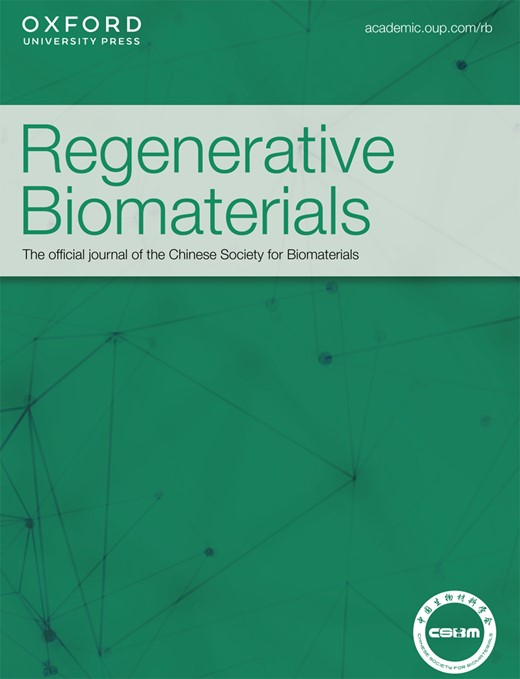制备和评估脱细胞表皮脲作为外周神经修复中的抗粘连生物膜
IF 5.6
1区 医学
Q1 MATERIALS SCIENCE, BIOMATERIALS
引用次数: 0
摘要
外周神经吻合术后,吻合部位容易与周围组织粘连,从而影响神经修复的效果。本研究探讨了脱细胞外膜作为抗粘连生物膜在周围神经修复中的发展和功效。首先,从新鲜猪坐骨神经中提取整个神经外膜,然后进行脱细胞处理。然后对脱胶效率进行了全面评估。随后,对脱细胞的会厌进行蛋白质组分析,以确定剩余的生物活性成分。为确保生物安全性,脱细胞附膜在皮下植入后进行了细胞毒性试验、溶血试验、细胞亲和性试验和免疫反应评估。最后,利用大鼠坐骨神经横断和吻合模型测定了生物膜的功能。结果表明,脱细胞过程有效地去除了附膜中的细胞成分,同时保留了一些生物活性分子,这种脱细胞附膜能有效防止粘连,同时促进神经修复和功能恢复。总之,脱细胞上皮代表了一种新型的、有前景的抗粘连生物膜,可提高周围神经修复手术的效果。本文章由计算机程序翻译,如有差异,请以英文原文为准。
Preparation and evaluation of decellularized epineurium as an anti-Adhesive biofilm in peripheral nerve repair
Following peripheral nerve anastomosis, the anastomotic site is prone to adhesions with surrounding tissues, consequently impacting the effectiveness of nerve repair. This study explores the development and efficacy of a decellularized epineurium as an anti-adhesive biofilm in peripheral nerve repair. Firstly, the entire epineurium was extracted from fresh porcine sciatic nerves, followed by a decellularization process. The decellularization efficiency was then thoroughly assessed. Subsequently, the decellularized epineurium underwent proteomic analysis to determine the remaining bioactive components. To ensure biosafety, the decellularized epineurium underwent cytotoxicity assays, hemolysis tests, cell affinity assays, and assessments of immune response following subcutaneous implantation. Finally, the functionality of the biofilm was determined using a sciatic nerve transection and anastomosis model in rat. The result indicated that the decellularization process effectively removed cellular components from the epineurium while preserving a number of bioactive molecules, and this decellularized epineurium was effective in preventing adhesion while promoting nerve repairment and functional recovery. In conclusion, the decellularized epineurium represents a novel and promising anti-adhesion biofilm for enhancing surgical outcomes of peripheral nerve repair.
求助全文
通过发布文献求助,成功后即可免费获取论文全文。
去求助
来源期刊

Regenerative Biomaterials
Materials Science-Biomaterials
CiteScore
7.90
自引率
16.40%
发文量
92
审稿时长
10 weeks
期刊介绍:
Regenerative Biomaterials is an international, interdisciplinary, peer-reviewed journal publishing the latest advances in biomaterials and regenerative medicine. The journal provides a forum for the publication of original research papers, reviews, clinical case reports, and commentaries on the topics relevant to the development of advanced regenerative biomaterials concerning novel regenerative technologies and therapeutic approaches for the regeneration and repair of damaged tissues and organs. The interactions of biomaterials with cells and tissue, especially with stem cells, will be of particular focus.
 求助内容:
求助内容: 应助结果提醒方式:
应助结果提醒方式:


